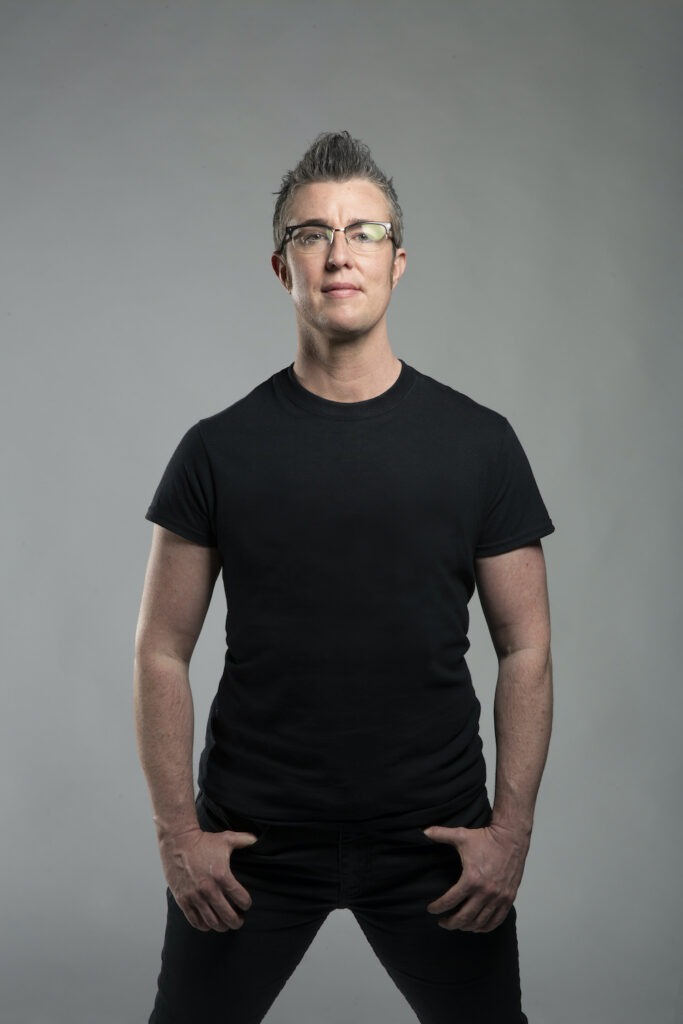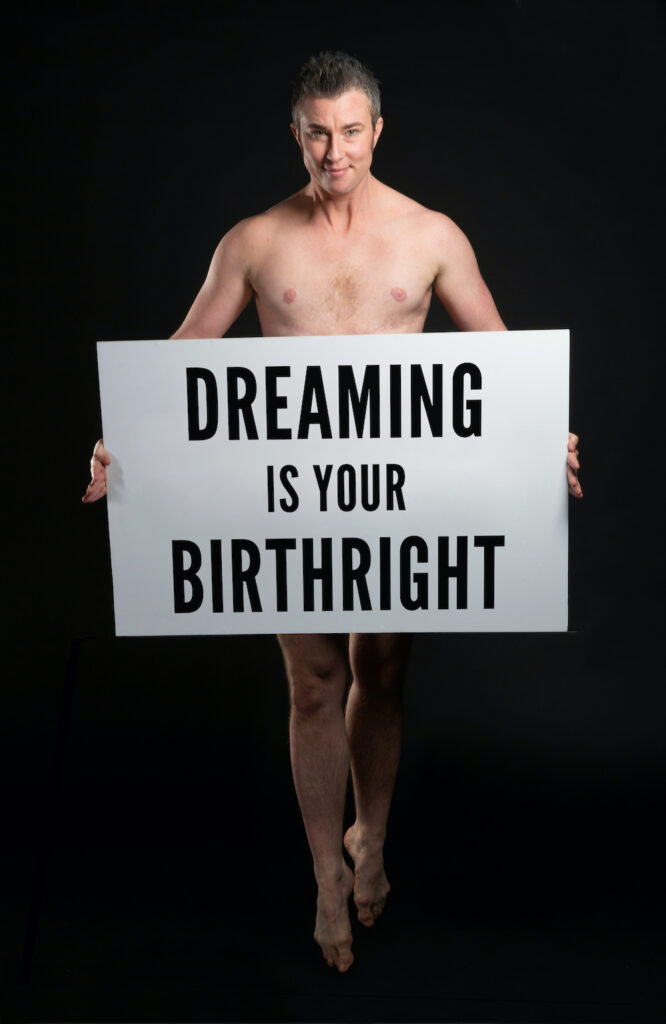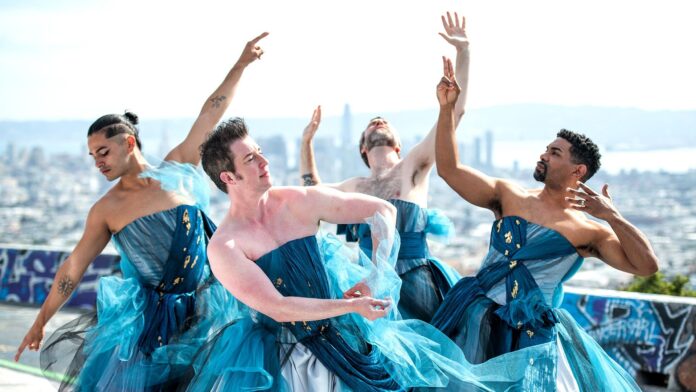Based on the physical velocity and the wrenchingly human and complex depth of storytelling in Sean Dorsey’s choreography, a person might never guess how he intends to use a $50,000 unrestricted 2024 United States Artists Fellowship he received.
Since 2006, the United States Artists organization has awarded over $38 million to practicing artists across the country in 10 creative disciplines. Given to artists from all career levels, the cash awards recognize the artistic vision and innovation of artists whose bodies of work demonstrate social engagement and community-mindedness. The grant is intended to encourage individual financial planning and includes access to lawyers, career consultants, and other professional services.

This year’s cohort of 50 fellows included six artists from California; among them is Dorsey, who on his website identifies as “a transgender, white, disabled/Hard-of-hearing and queer longtime social practice artist.” He is also an educator and artistic director of Sean Dorsey Dance Company, where for 22 years he has led trans-positive programming via Fresh Meat Productions. For its 20th anniversary season, the company is preparing a world premiere for the annual Fresh Meat Festival in June while simultaneously touring “The Lost Art of Dreaming,” an ever-evolving multi-year multimedia project that incorporates dance, storytelling and original music—some of it composed and sung by Dorsey himself.
Dorsey is also a real person who has been surviving for more than two decades as an artist in an especially gut-punching, difficult world. This last piece of the Dorsey puzzle explains the simplicity and practicality of his response during a phone conversation with 48hills in mid-April.
“How will I use the fellowship? The financial award, especially as someone who has supported himself from a young age, provides the ability to provide for my future, old age, and for my family,” he says. “I plan to use a nugget of it to take time off to celebrate the 20th anniversary season of the Sean Dorsey Dance Company and the fact that a trans person has been recognized. At this moment in time, when so many attacks fall on my community, we need all the trans-positive energy we can get. To have trans mentors lifted up means we can imagine having joyous futures for ourselves.”

Pausing, Dorsey’s thoughts deepen to consider the fellowship’s history. “It’s a beautiful party to join. The national recognition means lifting up my choreographic work as important, timely. More broadly, it invests in my future as a 51-year-old artist. I’m at the age where I’m thinking about the next couple of decades and succession with the nonprofit I founded, my far distant retirement, and how I will afford to live.”
Might a new work possibly include more of Dorsey the singer-composer, as does “The Lost Art of Dreaming”?
“Thank you for that question,” he says. “I’m delighted to be asked. It was exciting to compose the music for the score and to sing. Music and composition have played a huge, significant role in my life. [Dorsey began studying piano at age five.] It feeds my close collaboration with my team of composers.”
Help us save local journalism!
Every tax-deductible donation helps us grow to cover the issues that mean the most to our community. Become a 48 Hills Hero and support the only daily progressive news source in the Bay Area.
Dorsey is definitely not hands-off when it comes to these musical collaborations. He gets deep into drafts, providing feedback, and increasingly, composing and performing some of the score. “Most audiences come and leave my work thinking mostly of dance theater or choreographic craft, when musical research and work is so in my DNA as an artist. The feeling of releasing and opening our bodies feels like being not just driven, but fueled by sonic energy.”
A second key component in Dorsey’s body of work is guarding against didacticism. He makes a conscious effort to create on two channels—activist and artist—and yet, avoid becoming literal, heavy-handed, moralizing.
“Everything I do, I want to be deeply felt within myself and my audiences. It’s sent by the heart and gut and needs to be received on a deep, visceral level. It’s about the startling beauty and immediacy and breath and tactile response of two queer bodies touching onstage. These are the things that move mountains and alter culture.”

People lifting up others with flow and dexterity is a signature element of Dorsey’s choreography. To move society when it comes to trans, queer and gender-nonconforming artists requires all that and more. He suggests it means elevating trans aesthetics and showing a “door out of despair into possibility, and out of isolation into community.” American contemporary dance, Dorsey says, severely excludes trans bodies and cultural leadership: “The need is to re-tip the scales more equitably against the historic and current total eclipse of power and access.”
He half-believes things are changing for trans people within the national dance panorama, though his company still has to include the provision that backstage and lobby restrooms be gender-neutral. “The good thing is that many theaters make it permanent. They realize no one died, and it also makes it easier for people with disabilities or older people with caretakers of different genders to be accommodated.”
As much as Dorsey might use the fellowship to support planing for his later years, he knows continuing to rely on the network of collaborators and his family are immediate and essential. “I lean on my beloved partner of 22 years, Shawna Virago, who is also a trans artist, singer songwriter and more. She’s one of my greatest blessings and there’s so much abundant love that grows stronger every day. My extended family of collaborates starts with my amazing dancers, who create work with me in a deeply trust-based process.
“My work demands spiritual, physical, emotional trust that I feel a responsibility to build and protect. The dancers are full humans in the work. Then there’s my national network of presenters and commissioners—including the Queer Cultural Center who have supported me since my first commission of work. My career would not be where it is without all of them.”
For more information on Sean Dorsey Dance’s upcoming programming, go here.





